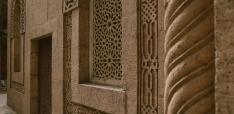An E-Class for the Working Class: Development, Technology, and Daimler-Chrysler
Karl Muth explains why recycling the old is far from a new idea.
In 2004, Chrysler launched the 300C saloon (which did not, unlike its 1960’s predecessors, have 300 horsepower). The interesting thing about the 300C is that it was largely based on the W210-generation Mercedes E-Class built between 1995 and 2003 (though parts of the 300C are arguably more closely-related to the earlier W124-generation E-Class built between 1984 and 1996). This concept – that most Americans would be happy enough with a fifteen-year-old Mercedes clothed in Chrysler sheetmetal – was brilliant and led to a few other cars (including the Dodge Magnum estate, loosely based on the 1997 W210 Mercedes estate and confusingly sold as a Chrysler in England).
It is not the car, but the idea, that is innovative and important – that less-demanding customers (in this case, Americans) – can be satisfied with older, second-hand technology. As the world becomes more economically-intertwined, it does not necessarily become more uniform in consumer preferences.
By exporting the W210 tooling (from robots to stamping dies to special hand tools and welding jigs) from Stuttgart, Germany to Detroit, USA, Mercedes got an additional nearly-ten-years of life out of tooling that would have been otherwise warehoused or scrapped. The revisions to the car were negligible compared to the cost of designing a model from the ground-up, and the fact that the model’s heavy tooling costs had already been amortised meant that the Chrysler product was very quickly profitable. Seeing a demand for an estate variant (American: “station wagon”) in addition to the saloon car (American: “sedan”), Mercedes even briefly revived the tooling for the W210 Mercedes E-class estate and began building the cars at Steyr in Graz, Austria (where old tooling is often warehoused by Mercedes, including the tools and dies needed to make every spare part for Mercedes’s military vehicles). The car was a financial success, and attracted some celebrity attention with a few famous owners (including Professor Barack Obama during his political ascent to Senator and, later, President).
There is a global move to retain, rather than scrap, older products. This can be seen in vehicles (the Chrysler 300 is not unique; Toyota still produces its Landcruiser 70 Series, which has undergone few changes to its basic architecture since its introduction in 1983), but also in other markets from mobile phones to civil engineering methods. Though there are many more examples, I’ll deal with these two in this blog post to illustrate the range of designs being “revived” for a variety of reasons.
There are persistent rumours from China and elsewhere that September 10th will bring two announcements from Apple, the iPhone 5S and iPhone 5C. The iPhone 5S has been much-discussed and is a high-end phone designed to compete with the now-dominant Android phones, particularly high-end products like the Samsung Galaxy S4 (which this blogger recently happily switched to, after having had seven iPhones since 2007). But the iPhone 5C rumour is, in many ways, more interesting. The iPhone 5 has seen less-than-expected adoption rates in key growth areas of the mobile market, including Africa, Asia, and South America. Many customers are continuing to use the iPhone 4S in these markets, forcing Apple to offer support for a now-quickly-ageing design (the iPhone 4 received its design sign-off from Cupertino nearly four years ago).
The iPhone 5C is meant to convert these “lag” customers, offering a lower-cost option for consumers who want a durable iPhone and are willing to have lower performance than the iPhone 5S. In many emerging markets, what may be seen as “downmarket” features in the U.S. (a plastic back rather than anodised aluminum, lack of 4G LTE service, etc.) may actually be positives, as they lead to a more durable device with longer battery life. The use of a cheaper, slower processor and a lower-end camera also will lead to better battery life and less space taken up by photos (current research shows that African mobile phone users take almost five times as many photos, on average, as American mobile phone users, so a high-megapixel camera and limited storage space may be a bad combination for these consumers).
Civil engineering methods are perhaps the least-expected area in which older technology is being reused and repurposed. Many firms designing highways (particularly after the 1989 Loma Prieta earthquake and subsequent earthquakes in Hong Kong) and other infrastructure have retired civil engineering methods from the 1960’s and 1970’s. While cheaper, these methods were largely derived from U.S. Army Corps of Engineers best practices from the 1950’s (during the massive expansion of the U.S. highway system, much of which was designed by military engineers), which were not geared toward issues like expandability (in terms of capacity or technology) or earthquake resistance (most of the 1950’s U.S. infrastructure expansion was across the plains states, an area of minimal known earthquake risk).
While these technologies have been retired in the developed world, they still are a marked improvement over the technologies being used to build in the developing world (much as a fifteen-year-old Mercedes is still better than what most American new car buyers are accustomed to).
The re-use of building plans, in so-called modular architecture, is not new. Parts of the high-security framework within the DAM building of the Denver Art Museum (completed in 1971 with a high-security internal plan inspired by a series of high-profile art thefts of the late 1960’s) were re-used in the building of the Metropolitan Correctional Center, a federal prison in downtown Chicago, a few years later (as a result, the museum and the prison share certain aesthetic characteristics, though this is a product of cost-saving re-use of these sections of design and not intentional). Architect Harry Weese was later critical of the cost-saving demands placed by the Federal Bureau of Prisons, claiming these led to delays in the building’s construction. The re-use of parts of architectural plans (called "tracing" from the days of literally tracing blueprints from one building project onto another by pencil) was not new, nor were Weese's concerns. However, the international reuse of building plans, particularly large-scale plans for projects like bridges, is a newer phenomenon.
Kenya is building a railway line that will require the most complex serial bridge in East Africa, which will consist of four consecutive long bridges to span the western Kenyan swamps during the rainy season. The line, which will run from Mombasa to Malaba (on the Ugandan border) with an oil and gas pipeline adjacent, will be financed by the Chinese government and is essentially a complete replica of the rail line the Chinese government built from Zengzhou, Henan to Shanghai (this rail route is almost precisely the same length, requires the same bridging and bed improvement engineering, and links Shanghai to the primary trans-shipping point for coal from northern China – it does not include the adjacent pipeline system). Like the Zengzhou-Shanghai route, the Kenyan route will use Chinese heavy freight gauge rail, rather than the British W8 gauge used during Colonial times. This will also require the replacement of Kenya’s Type B railcars with “zhong” (literally “heavy”) rolling stock, allowing substantially higher tonnage freight capacity on a per-car and journey basis.
The export of floating bridges, most modeled after the 520 bridge in Seattle, Washington (which outlived its expected service life by 30 years, something noticed and valued by developing countries), is another example of exported infrastructure technology. The bridge at Georgetown, Guyana, which was modeled after American floating bridge designs like the 520 bridge, has now been successfully copied by the Chinese and Chinese-funded floating bridges are under construction in Nigeria, Kenya, Ethiopia, and Malaysia. While these bridges are difficult to expand, they do not fail suddenly (unlike causeway bridges) and do not require complex inspection regimes to remain safe (unlike suspension bridges). They are also less sensitive to seismic instability (one of the reasons the 520 bridge design was selected for Seattle, which lies in an earthquake zone), leading China to use floating bridge designs heavily in areas where earthquakes are a concern. Coincidentally, this Chinese use of the floating bridge brings the story of the floating bridge full circle, as pontoon bridges were invented in China during the Zhou Dynasty and used heavily during the Han expansion into the Southern States.
Electricity and solar power are another area of infrastructure expansion using outdated technology. Solar panels now improve on roughly an 18-month generation cycle. That is, solar panels developed today are at least 50% more efficient than those developed only 18 months ago. However, older technology (18 months to three years old) is still good enough for many in the developing world. Many, including BP and Samsung, have been quick to move this older (and hence cheaper) technology into town centres across Africa and rural Asia.
Simply because there is a newer model does not mean the old model is obsolete. In fact, older technology may be suitable (or even preferable) in some applications. The savvy re-use of the older Mercedes E-class after Daimler-Benz merged with Chrysler was not a cynical marketing exercise, but rather an excellent illustration of the fact that eager customers exist for older technology, so long as it is made available in the right context at the right price.


